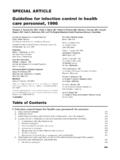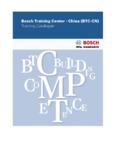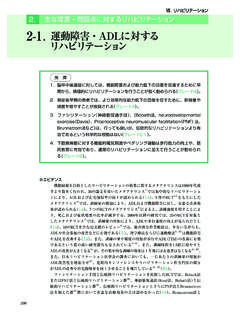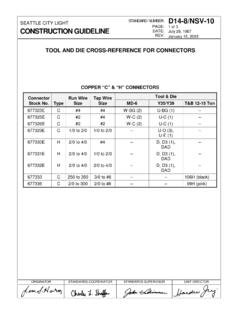Transcription of Application Guide: LP-Gas Regulators and Equipment ...
1 TECHNICALThe Technical Reference section includes articles covering regulator theory, sizing, selection, overpressure protection, and other topics relating to Regulators . This section begins with the basic theory of Regulators and ends with conversion tables and other informative section is for general reference only. For more detailed information please visit or contact your local LP-Gas Equipment of Contents 270 TECHNICALR egulator Control TheoryFundamentals of Gas Pressure Regulators .. 275 Pilot-Operated Regulators .. 276 Conclusion .. 276 Regulator Components Straight Stem Style Direct-Operated.
2 277 Lever Style Direct-Operated .. 278 Loading Style (Two-Path Control) Pilot-Operated .. 279 Unloading Style Pilot-Operated .. 280 Introduction to Regulators Specific Regulator Types .. 281 Pressure Reducing Regulators .. 281 Backpressure Regulators and Relief Valves .. 282 Pressure Switching Valves .. 282 Types of Regulators .. 281 Direct-Operated (Self-Operated) Regulators .. 281 Pilot-Operated Regulators .. 281 Regulator Selection Criteria .. 282 Control Application .. 283 Pressure Reducing Regulator Selection .. 283 Outlet Pressure to be Controlled .. 283 Inlet Pressure of the Regulator.
3 283 Capacity Required .. 283 Shutoff Capability .. 283 Process Fluid .. 283 Process Fluid Temperature .. 283 Accuracy Required .. 284 Pipe Size Required .. 284 End Connection Style .. 284 Required Materials .. 284 Control Lines .. 284 Stroking Speed .. 284 Overpressure Protection .. 284 Regulator Replacement .. 284 Regulator Price .. 285 Backpressure Regulator Selection .. 285 Relief Valve Selection .. 285 TheoryPrinciples of Direct-Operated RegulatorsIntroduction .. 286 Regulator Basics .. 286 Essential Elements .. 286 Restricting Element .. 287 Measuring Element.
4 287 Loading Element .. 287 Regulator Operation .. 287 Increasing Demand .. 287 Decreasing Demand .. 287 Weights versus Springs .. 287 Spring Rate .. 288 Equilibrium with a Spring .. 288 Spring as Loading Element .. 288 Throttling Example .. 288 Regulator Operation and P2 .. 289 Regulator Performance .. 289 Performance Criteria .. 289 Setpoint .. 289 Droop .. 289 Capacity .. 289 Accuracy .. 289 Lockup .. 289 Spring Rate and Regulator Accuracy .. 290 Spring Rate and Droop .. 290 Effect on Plug Travel .. 290 Light Spring Rate .. 290 Practical 290 Diaphragm Area and Regulator Accuracy .. 290 Diaphragm Area.
5 290 Increasing Diaphragm Area .. 291 Diaphragm Size and Sensitivity .. 291 Restricting Element and Regulator Performance .. 291 Critical Flow .. 291 Orifice Size and Capacity .. 292 Orifice Size and Stability .. 292 Orifice Size, Lockup, and Wear .. 292 Orifice Guideline .. 292 Increasing P1 .. 292 Factors Affecting Regulator Accuracy .. 292 Performance Limits .. 292 Cycling .. 292 Design Variations .. 292 Improving Regulator Accuracy with a Pitot Tube .. 293 Numerical Example .. 293 Decreased Droop (Boost) .. 293 Improving Performance with a Lever .. 293 Table of Contents 271 TECHNICALO verpressure Protection MethodsMethods of Overpressure Protection.
6 302 Relief Valves .. 302 Types of Relief Valves .. 302 Advantages .. 302 Disadvantages .. 302 Monitoring Regulators .. 303 Advantages .. 303 Disadvantages .. 303 Working Monitor .. 303 Series Regulation .. 303 Advantages .. 304 Disadvantages .. 304 Shutoff Devices .. 304 Advantages .. 304 Disadvantages .. 304 Relief Monitor .. 304 Summary .. 305 Principles of Relief ValvesOverpressure Protection .. 306 Maximum Pressure Considerations .. 306 Downstream Equipment .. 306 Main Regulator .. 306 Piping .. 306 Relief Valves .. 306 Relief Valve Popularity.
7 307 Relief Valve Types .. 307 Selection Criteria .. 307 Pressure Buildup .. 307 Periodic Maintenance .. 307 Cost versus Performance .. 307 Installation and Maintenance Considerations .. 307 Pop Type Relief Valve .. 307 Operation .. 307 Typical applications .. 308 Advantages .. 308 Disadvantage .. 308 Direct-Operated Relief Valves .. 308 Operation .. 308 Product Example .. 309 Typical applications .. 309 Selection Criteria .. 309 Pilot-Operated Relief Valves .. 310 Operation .. 310 Product Example .. 310 Performance .. 311 Typical applications .. 311 Selection Criteria.
8 311 Principles of Pilot-Operated RegulatorsPilot-Operated Regulator Basics .. 294 Regulator Pilots .. 294 Gain .. 294 Identifying Pilots .. 294 Setpoint .. 294 Spring Action .. 294 Pilot Advantage .. 294 Gain and Restrictions .. 294 Stability .. 294 Restrictions, Response Time, and Gain .. 295 Loading and Unloading Designs .. 295 Two-Path Control (Loading Design) .. 295 Two-Path Control Advantages .. 296 Unloading Control .. 296 Unloading Control Advantages .. 296 Performance Summary .. 296 Accuracy .. 296 Capacity .. 296 Lockup .. 297 applications .. 297 Two-Path Control .. 297 Type 1098-EGR.
9 297 Type 99 .. 298 Unloading Design .. 298 Selecting and Sizing Pressure Reducing RegulatorsIntroduction .. 299 Quick Selection Guides .. 299 Product Pages .. 299 Special Requirements .. 299 The Role of Experience .. 299 Sizing Equations .. 299 General Sizing Guidelines .. 300 Body Size .. 300 Construction .. 300 Pressure Ratings .. 300 Wide-Open Flow Rate .. 300 Outlet Pressure Ranges and 300 Accuracy .. 300 Inlet Pressure Losses .. 300 Orifice Diameter .. 300 Speed of Response .. 300 Turn-Down Ratio .. 300 Sizing Exercise: Industrial Plant Gas Supply.
10 300 Table of Contents 272 TECHNICALV acuum Regulator Installation Examples .. 320 Gas Blanketing in Vacuum .. 323 Features of Fisher Brand Vacuum Regulators and Breakers .. 323 Valve Sizing Calculations (Traditional Method)Introduction .. 324 Sizing for Liquid Service .. 324 Viscosity Corrections .. 324 Finding Valve Size .. 324 Predicting Flow Rate .. 326 Predicting Pressure Drop .. 326 Flashing and Cavitation .. 326 Choked Flow .. 327 Liquid Sizing Summary .. 329 Liquid Sizing Nomenclature .. 329 Sizing for Gas or Steam Service .. 330 Universal Gas Sizing Equation.
















